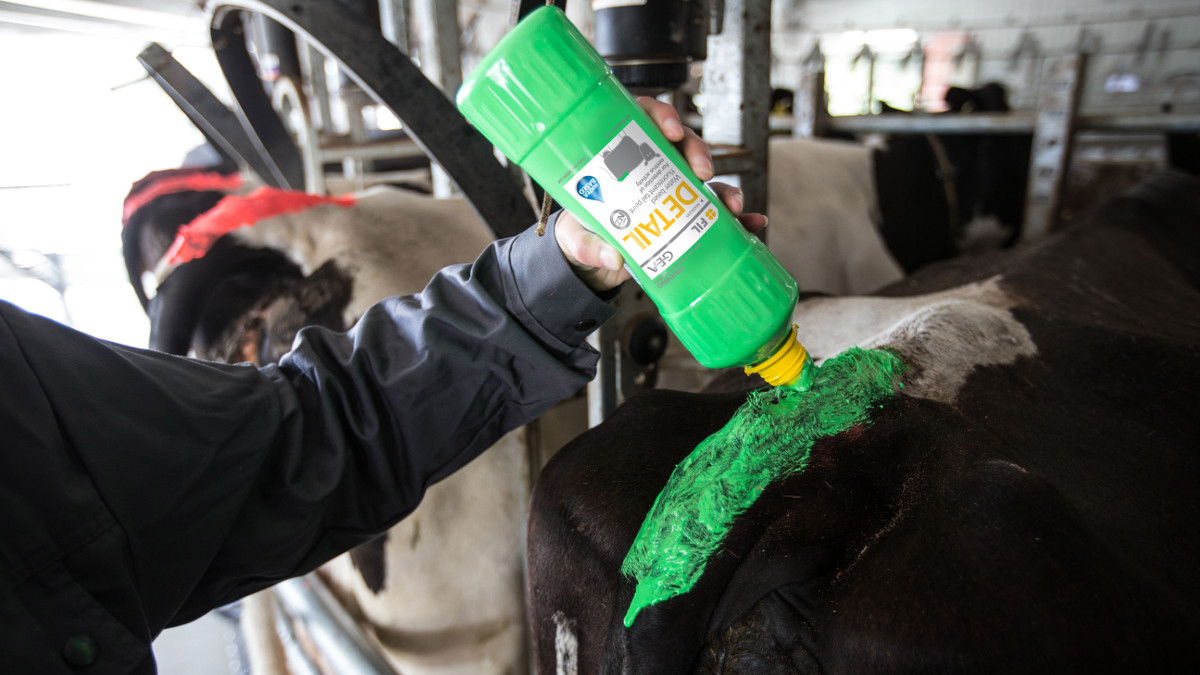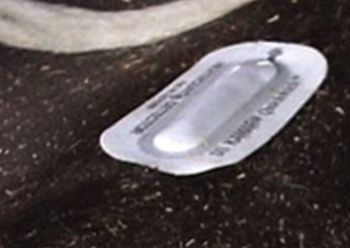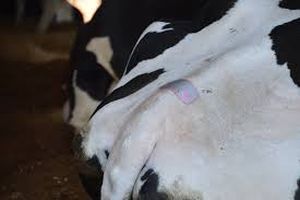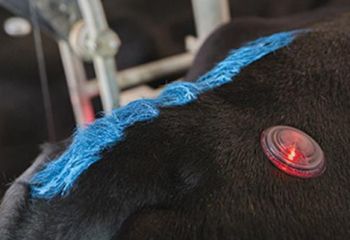dairy farming,
heat,
heat detection
5 no-nonsense heat detection aids
Heat detection aids can help identify bulling cows and this is particularly important for herds using AI.
Identifying cows on heat can be difficult, as the average heat only lasts nine hours and most "standing" activity occurs in the hours of darkness.
Therefore, it may be necessary to use heat detection aids; such as tail paint, kamars or scratch cards — to identify cows that need to be drafted and served.
 1. Tail Paint
1. Tail Paint
One of the cheapest methods of identifying cows in heat is through the use of a thin strip of paint applied to the top of the cow’s tail. If the cow is mounted, a clear sign of oestrus, the thin strip of paint will be rubbed off. This will allow the cow to be separated from the main herd and served.
To get the full benefits from the product, one company has developed the following guidelines:
- Paint all cows with red paint three weeks after calving. If rubbed, this indicates when the cow has started to cycle again. If the cow has not come into heat after calving you can take remedial action.
- Paint all cows with green paint immediately prior to commencing your AI programme. Rubbed paint identifies the cows coming into heat on a daily basis.
- Paint each cow with blue paint as soon as she has been AI’d. This will tell you if she has held to the service.
- Paint all cows with yellow when pregnancy is confirmed.
A number of Irish retailers stock Tell Tail paint and prices for a 500ml brush on-bottle are typically €9.90−14.40. Spray-on versions are also available and spot prices sit at €9−10/500ml.
 2. Kamars
2. Kamars
Developed in the US, Kamars have grown in popularity on Irish farms in recent years. Kamars sit between the cow’s hip bones and are said to be an «accurate and cost effective” method of identifying standing heats in cows.
The product alerts farmers to the presence of bulling cows by a changing colour — from white to red. These heat detection aids are pressure sensitive and include a built-in timing mechanism, which is designed to be activated by standing heat behaviour.
This mechanism helps distinguish between true standing heats and false mounting activity, as the detector requires approximately three seconds of mounting activity before it changes colour. The products are available to Irish farmers and cost €1.60−1.84/each (excluding glue).
 3. Scratch Cards
3. Scratch Cards
A number of companies sell scratch card type heat detectors on the Irish market. The products are relatively cheap to buy. These cards can either come with a self-adhesive back or may require the use of glue to apply them to the base of the cow’s tail.
When mounting activity occurs, the scratch card is rubbed and changes colour to indicate that the cow may need to served. Depending on type, the products typically cost €1.32−1.80/card.
 4. Vasectomised Bull With A Chin-Ball Harness
4. Vasectomised Bull With A Chin-Ball Harness
Another effective way of detecting bulling cows is through the use of a vasectomised or "teaser" bull fitted with a chin-ball harness. The cost of performing the procedure on a bull is €90−120 and it should be completed at least 40−60 days before the "teaser" bulls is introduced to the herd.
For the most part, these bulls work best in the first three weeks of the breeding season or towards the end of the season when the level of heat activity falls off — as the number of pregnant cows in the herd increases.
 5. FlashMate Heat Detector
5. FlashMate Heat Detector
A new product on the Irish market, FlashMate Heat Detector, sits adjacent to the tail ridge and can be used alongside tail paint.
The product is designed to stay on across multiple heats and alert the farmer to each opportunity to inseminate — with a red flashing light. Each device contains a microchip and is touch-sensitive.
It analyses mounting behavior among cows entering the sexually active group 24/7 — often identifying extra submissions from «silent' cows that the farmer may not otherwise submit, resulting in extra pregnancies.
